Research News
- Dr Anil K. Suresh receives DBT grant for detoxifying sewage dyes at pilot scale December 17, 2021
 SRM University-AP is pleased to announce that Dr Anil K. Suresh, Associate Professor in the Department of Biological Sciences, has been awarded a DBT grant for his project entitled “Pilot-scale ultra-efficient fixative sewage dye-degradation by our ‘3D-megacatalyst’ generated using intact eggshell waste”.
SRM University-AP is pleased to announce that Dr Anil K. Suresh, Associate Professor in the Department of Biological Sciences, has been awarded a DBT grant for his project entitled “Pilot-scale ultra-efficient fixative sewage dye-degradation by our ‘3D-megacatalyst’ generated using intact eggshell waste”.About the Project:
Catalysis is widely used in various industrial and pharmaceutical processes to fasters the production of the desired end products. The use of inert matrices or frameworks is emerging as a “supported catalysts” arena with the potential for efficient reuse and recovery of the catalyst. We have recently generated a wide area supported catalyst utilising intact eggshell bio-waste, and the process is autogenic, facile, cost-efficient and entirely biodegradable. This supported megacatalyst can be effortlessly removed from the reaction by hand.
The current DBT-funding through Accelerated Translational Grant for Commercialization (ATGC) program is to support the technological reediness of our project for its commercialisation as a measure of Technology Readiness Level (TRL), an estimation technologies maturity and readiness for its utilisation in the commercial market. By demonstrating proof-of-concept laboratory studies, we are currently at TRL-6, and through this project, we will demonstrate pilot-scale studies for reaching the TRL-9 (Market/Operational level).
The main objectives of the proposal are:
1. Demonstrating large-volume degradations of sewage dyes at 500 L to 1000 Litres volume capacities in custom-built batch reactors.
2. Gram-scale hydrogenation of nitroarenes for the production of ~500 grams of pharmaceutical derivatives.
Social Implications of the project by Dr Anil K. Suresh:
Thousands of litres of harmful textile, paper sewage dyes that are corrosive and toxic to the environment and are unintendedly released can now be degraded into detoxified colourless by-products and water by using our “Au@megacatalyst”.
Pharmaceutically important precursors such as 4-aminophenol, propargyl amines can be produced in milligrams of quantities by using “Au@megacatalyst”, which otherwise are expensive and hard to synthesise. And most importantly, such precursors are currently being procured from China and other countries that can be avoided, and indigenous make-in-India can be conceptualised using our catalyst.
Dr Anil K. Suresh would be the principal investigator of this project, with a total outlay of Rs. 31 lacs over two years.
- CSE student wins Best Paper award and cash prize in International conference December 14, 2021
 Padmaja Buggaveeti, an outstanding student from 3rd-year Computer Science Engineering at SRM University-AP, has won Best Paper (Third Prize) and a cash prize of Rs 10000 /- (Ten thousand rupees only) at the 4th ISEA Virtual International Conference on Security and Privacy 2021. Ms Padmaja, under the mentorship of her guide Dr V M Manikandan, presented a paper titled “A Novel Prediction Error Histogram Shifting-based Reversible Data Hiding Scheme for Medical Image Transmission” at the International Conference on Security and Privacy, sponsored by Information Security and Education Awareness Project Phase-II (ISEA-II) and organised by IIT (ISM) Dhanbad, India from October 27-30, 2021.
Padmaja Buggaveeti, an outstanding student from 3rd-year Computer Science Engineering at SRM University-AP, has won Best Paper (Third Prize) and a cash prize of Rs 10000 /- (Ten thousand rupees only) at the 4th ISEA Virtual International Conference on Security and Privacy 2021. Ms Padmaja, under the mentorship of her guide Dr V M Manikandan, presented a paper titled “A Novel Prediction Error Histogram Shifting-based Reversible Data Hiding Scheme for Medical Image Transmission” at the International Conference on Security and Privacy, sponsored by Information Security and Education Awareness Project Phase-II (ISEA-II) and organised by IIT (ISM) Dhanbad, India from October 27-30, 2021.Abstract: In this paper, Ms Padmaja proposed a new prediction error histogram shifting-based reversible data hiding scheme that ensures a high embedding rate and lossless image recovery. The pixels in the images are categorised into two different classes: white pixels and black pixels based on a checkerboard pattern. To predict the black pixel value for finding the prediction, they used the average of three pixels out of 4-neighbourhood pixels, which are very close to the central pixel value. The prediction error histogram is considered for further data hiding through the histogram shifting approach. An efficient overflow handling technique is used for this. The proposed algorithms were implemented using Matlab-2020, and the experimental study of the proposed scheme is carried out on the standard medical images and natural images.
International Conference on Security and Privacy is a premier conference focused on information security and privacy. This year’s conference was sponsored by Information security and Education Awareness Project Phase-II (ISEA-II) and organised by IIT (ISM) Dhanbad, India, from October 27-30, 2021.
Prize Details: Best Paper (Third Prize) and a cash prize of Rs. 10000 /- (Ten thousand rupees only).
Let’s hear what Ms Padmaja says about her achievement!
I thank Dr V M Manikandan, Assistant Professor in the Department of Computer Science and Engineering, for his valuable guidance in this research work. Winning the best paper award and cash prize in a reputed conference, ISEA-ISAP, has strikingly boosted my confidence to do research. I am grateful to all the faculty members of the CSE Department for their kind support and encouragement throughout my study at SRM University-AP.
Continue reading → - Dr Nimai Mishra on Impact of shell thickness on photostability studies of green-emitting “Giant” quantum dots December 8, 2021
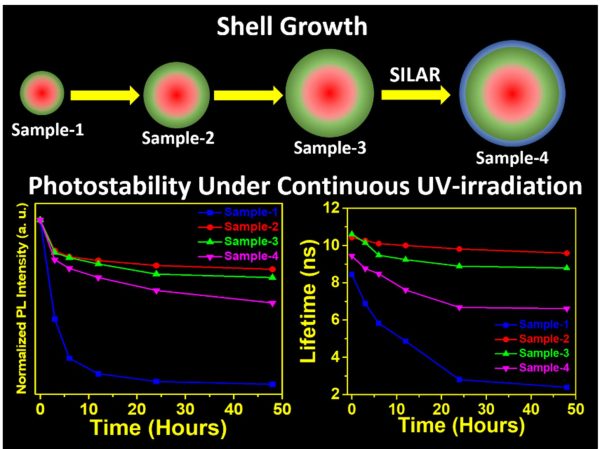 SRM University-AP is pleased to announce that Dr Nimai Mishra, Assistant Professor, Department of Chemistry, SRM University-AP, Andhra Pradesh, along with his research group comprising of students pursuing PhD under him, Mr Rahul Singh, Mr Syed Akhil, and Ms V.G.Vasavi Dutt, has published a research article titled “Shell thickness-dependent photostability studies of green-emitting “Giant” quantum dots” in the journal Nanoscale Advances (The Royal Society of Chemistry) with an impact factor of ~4.533.
SRM University-AP is pleased to announce that Dr Nimai Mishra, Assistant Professor, Department of Chemistry, SRM University-AP, Andhra Pradesh, along with his research group comprising of students pursuing PhD under him, Mr Rahul Singh, Mr Syed Akhil, and Ms V.G.Vasavi Dutt, has published a research article titled “Shell thickness-dependent photostability studies of green-emitting “Giant” quantum dots” in the journal Nanoscale Advances (The Royal Society of Chemistry) with an impact factor of ~4.533.About the research:
Highly efficient green-emitting core/shell giant quantum dots have been synthesized through a facile “one-pot” gradient alloy approach. Furthermore, an additional ZnS shell was grown using the “Successive Ionic Layer Adsorption and Reaction” (SILAR) method. Due to the faster reactivity of Cd and Se compared to an analogue of Zn and S precursors it is presumed that CdSe nuclei are initially formed as core and gradient alloy shells simultaneously encapsulate the core in an energy-gradient manner and eventually thick ZnS shells were formed. Using this gradient alloy approach, we have synthesized four different sized green-emitting giant core-shell quantum dots to study their shell thickness-dependent photostability under continuous UV irradiation, and temperature-dependent PL properties of nanocrystals. There was a minimum effect of the UV light exposure on the photostability after a certain thickness of the shell. The QDs diameter of ≥ 8.5 nm shows substantial improvement in photostability compared to QDs with a diameter ≤ 7.12 nm when continuously irradiated under the strong UV light (8 W/cm2, 365 nm) for 48 h. The effect of temperature on the photoluminescence intensities was studied with respect to shell thickness. There were no apparent changes in PL intensities observed for the QDs ≥ 8.5 nm, on the contrary, for example, QDs with < 8.5 nm in diameter (for ~7.12 nm) show a decrease in PL intensity at higher temperatures ̴90°C.
More importantly, these results highlight the synthesized green-emitting gradient alloy QDs with superior optical properties can be used for highly efficient green emitters and are potentially applicable for the fabrication of green LEDs.
Read the full paper: https://pubs.rsc.org/en/content/articlelanding/2021/NA/D1NA00663K
Continue reading → - Rs. 44 lacs fund from SERB-DST for functionalized alkene preparation strategy November 25, 2021
 Prof S Mannathan has added SRM University-AP to the list of those research-oriented Universities which try to direct their research to make the world a better place. With this new SERB-DST project of Rs. 44 lacs fund, Dr Mannathan and his team will be able to investigate into developing a strategy to prepare functionalized alkenes in a manner that is pro-environment and industrially economic.
Prof S Mannathan has added SRM University-AP to the list of those research-oriented Universities which try to direct their research to make the world a better place. With this new SERB-DST project of Rs. 44 lacs fund, Dr Mannathan and his team will be able to investigate into developing a strategy to prepare functionalized alkenes in a manner that is pro-environment and industrially economic.Why functionalized alkenes? Alkene is a hydrocarbon with a C=C bond. It is readily available and a fan favourite among chemists. It reacts favourably with a variety of reactants and is a preference in the synthesis of bioactive compounds. This procedure aids in the preparation of several valuable compounds with a variety of uses from the manufacturing of antidepressants to the treatment of cancer.
What Prof Mannathan says about the project:
“We intend to develop a highly efficient, low-cost, environmentally-friendly strategy to prepare functionalized alkenes in a highly regio- and stereoselective manner. A step- and atom economic reductive coupling strategy will be employed by using a photoredox and a low valent metal dual catalyst to prepare such molecules. This novel approach avoids the use of any external reducing agent and generates the low valent metal species in situ using a photocatalyst.”
Dr Mannathan was granted a total of Rs. 44,11,264 for a period of 3 years. Dr Mannathan believes that with a SERB sanctioned fund of Rs. 44 lacs, he and his team will be able to design a new and revolutionary protocol. The newly designed protocol could be useful in the synthesis of various biologically active molecules and natural products such as aigialomycin D which is a helpful compound in inhibiting protein kinases that are related to cancer pathways.
Continue reading → - Top 5% most cited author: Royal Society of Chemistry November 23, 2021
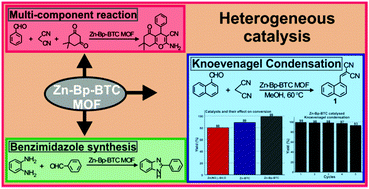 SRM University-AP could not be more proud to announce that Dr S Mannathan, Head of Department of Chemistry has made it to the top 5% in the list of the Most Cited Authors by the Royal Society of Chemistry. It is inspiring to have a faculty member in our midst whose work has helped and facilitated the research of so many others.
SRM University-AP could not be more proud to announce that Dr S Mannathan, Head of Department of Chemistry has made it to the top 5% in the list of the Most Cited Authors by the Royal Society of Chemistry. It is inspiring to have a faculty member in our midst whose work has helped and facilitated the research of so many others.Dr Mannathan obtained his doctorate from National Tsing Hua University, Taiwan. His research interests primarily lie in Metal-catalyzed organic transformation reactions, Multicomponent reactions, and Asymmetric synthesis. His research followed by scientists all over the world leading him to become one of the top 5% authors in terms of citations
In the field of Transition Metal Complexes as Catalysts in Organic Reactions, he particularly leans towards ‘Nickel-and cobalt-catalyzed three-component coupling and reductive coupling reactions’, and ‘Palladium-catalyzed reductive arylation’. Similarly, in Asymmetric Synthesis, he favours research into ‘Asymmetric reductive Heck reaction for the synthesis of chiral indanones’, and ‘Synthesis of bicyclic tertiary alcohols and its related asymmetric version via reductive [3+2] cycloaddition reaction by using chiral cobalt complexes.’
About the top 5% most cited paper:
In this work, he reported the synthesis and application of a Zn-Bp-BTC MOF (Bp – 4,4′-bipyridine; BTC – 1,3,5-benzene tricarboxylic acid; MOF – metal organic framework) as a heterogeneous catalyst for mediating organic reactions. Initial reaction conditions were optimized for the Knoevenagel condensation reaction using Zn-Bp-BTC as a heterogeneous catalyst. Various factors such as the effect of solvent, temperature and catalyst loading were evaluated. Although the reaction proceeded at room temperature using methanol as the solvent, 60 °C offered the best yield in a shorter duration. Under optimized reaction conditions, a wide range of α,β-unsaturated dicyano compounds were prepared from the corresponding carbonyl precursor and malononitrile, the active methylene counterpart. A systematic investigation was also carried out to assess the role of the ligand and metal salt in the Knoevenagel condensation reaction. It was found that the Zn-Bp-BTC MOF catalyzed the reaction efficiently in comparison to its analogue Zn-BTC MOF and precursor Zn(NO 3 ) 2 ·6H 2 O. Finally, catalytic recycling and stability studies showed that the catalyst is able to mediate the reaction for up to five consecutive cycles without undergoing any significant chemical or morphological changes. Further, the catalyst was tested for its efficacy in a multicomponent reaction (MCR). An MCR with the Zn-Bp-BTC MOF as the catalyst afforded good yields and there was no reaction in the absence of the catalyst. Similarly, the catalyst was tested for its efficiency in benzimidazole synthesis.
Dr Mannathan did this research in collaboration with Dr. Kathiresan Murugavel, Scientist, Electro Organic Division, CSIR-Central Electrochemical Research Institute (Govt of India), Karaikudi.
Continue reading → - Detection of diabetic retinopathy (DR) severity from fundus photographs November 19, 2021
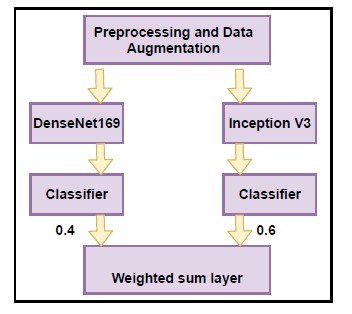 A research paper titled “Detection of Diabetic Retinopathy (DR) severity from fundus photographs: An Ensemble Approach using weighted average”, has been published by Dr Mahesh Kumar Morampudi, Assistant Professor of Computer Science and Engineering, in the Arabian Journal for Science and Engineering.
A research paper titled “Detection of Diabetic Retinopathy (DR) severity from fundus photographs: An Ensemble Approach using weighted average”, has been published by Dr Mahesh Kumar Morampudi, Assistant Professor of Computer Science and Engineering, in the Arabian Journal for Science and Engineering.Diabetic Retinopathy is a common diabetic disease that affects the retina and can result in blindness if not treated initially. Deep learning (DL) based models are proposed to detect the blood abnormalities in the retinal tissue due to diabetes mellitus obtained from fundus camera. The drawback of these models is the lack of performance. To address this, we propose to automate the process of detection of the severity of Diabetic Retinopathy (DR) using ensembles of pre-trained models, thus exploring the power of transfer learning in the field of automated diagnosis. Deep learning models perform well when the model is trained on a large amount of data. In this regard, we also put forth data augmentation and preprocessing techniques to generate synthetic images and to improve image quality. Extensive experimental results on publicly available databases illustrate that the proposed ensemble model achieves fair accuracy when compared to existing models. Thus, the proposed model shows good scope for deployment in real-time diagnosis.
Every year multiple people are diagnosed with diabetes. Diabetes is a chronic disease that affects several organs of the human body namely the eyes, kidneys, heart etc. Diabetic Retinopathy (DR) is a situation induced by diabetes in which severe loss happens to the retinal blood vessels that can ultimately lead to blindness. Regular diabetic retinopathy screening is hence needed for detecting it in advance. In the present situation, a trained clinician or an ophthalmologist is required to identify diabetic retinopathy (DR) by the existence of lesions related to the vascular abnormalities induced by the disease. The ophthalmologist needs to evaluate and examine digital colour fundus images of the retina. So, it is a very tedious and sluggish process. He/She needs more time to diagnose DR. The diagnosis of the disease by any manual means seems to be tiresome and usually results in errors. To overcome this limitation, we propose a model to automate the process of detection of the severity of DR using ensembles of pre-trained models, thus exploring the power of transfer learning in the field of automated diagnosis.
The research group believes that the study helps ophthalmologists to identify diabetic retinopathy at its early stage accurately, as a result, the chance of losing the vision due to diabetic retinopathy can be reduced. The work is done in collaboration with Dr Mulagala Sandhya, Assistant professor, NIT-Warangal. In the future, Dr Mahesh Kumar plans to work on a project related to Privacy-preserving Biometric Authentication.
Continue reading → - Obtaining encrypted images with new Reversible Data Hiding scheme November 16, 2021
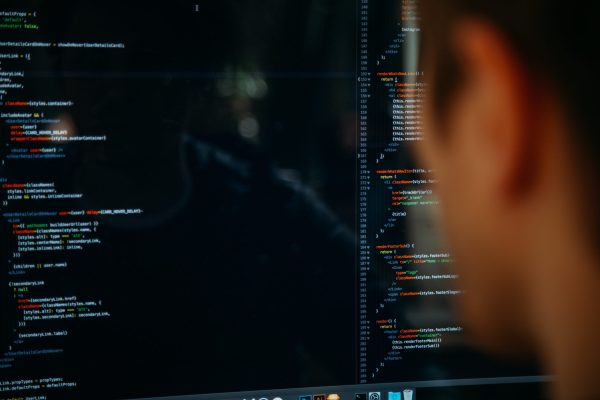 SRM University-AP is pleased to announce that Dr V M Manikandan, Assistant Professor in the Department of Computer Science and Engineering, along with his research scholar Shaiju Panchikkil, published a paper titled, “A convolutional neural network model based reversible data hiding scheme in encrypted images with block-wise Arnold transform” in Optik Journal, Elsevier Publications.
SRM University-AP is pleased to announce that Dr V M Manikandan, Assistant Professor in the Department of Computer Science and Engineering, along with his research scholar Shaiju Panchikkil, published a paper titled, “A convolutional neural network model based reversible data hiding scheme in encrypted images with block-wise Arnold transform” in Optik Journal, Elsevier Publications.The proposed scheme can be used for embedding electronic patient reports (EPR) in the medical image itself while transmitting, and at the receiver side the reports can be extracted along with the lossless recovery of the medical images.
About the Research:
Data hiding or information hiding is a well-explored way to secure some secret data by concealing it in a digital cover medium. The reversible data hiding (RDH) is a recent advancement in the field of data hiding in which the cover medium can be restored during the extraction of hidden messages at the receiver side. The RDH schemes are widely used in medical image transmission and cloud computing. Recently, research in the field of RDH in encrypted images got much attention to improve the efficiency parameters such as embedding rate and bit error rate without compromising the lossless recovery of the images. In this research paper, we propose a new RDH scheme in encrypted images which utilizes the Arnold scrambling technique for data hiding. A convolutional neural network (CNN) model is trained and used to extract the hidden message along with the recovery of the original image. The experimental study and result analysis of the proposed scheme are carried out on the USC-SIPI image dataset managed by the University of Southern California.
Dr Manikandan collaborated with Prof. Yu-Dong Zhang, Professor in School of Computing and Mathematical Sciences, University of Leicester, UK collaborated for this research work. In the future, Dr Manikandan’s research will be more focussed on coming up with new reversible data hiding schemes in encrypted images with better embedding rate and bit error.
Continue reading → - Stabilizing Li-S batteries: energy storage solution for the future November 10, 2021
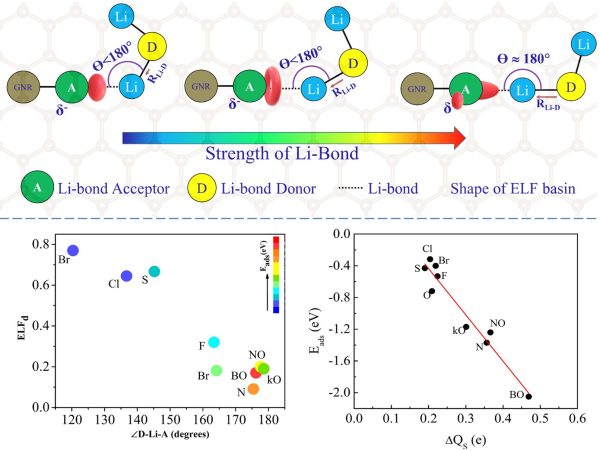 As technology gets revolutionized, we face the need to have more- more efficient energy storage solutions with decreased strain on the environment to meet our need. SRM University-AP happy to let everyone know that our Dr Ranjit Thapa, Professor of Physics along with his PhD scholar, Mr Deepak S Gavali has published a paper titled, “Understanding the role of lithium bonds in doped graphene nanoribbons as cathode hosts for Li-S batteries: A first-principles study” in ‘International Journal of Energy Research’, having an Impact Factor of 5.164.
As technology gets revolutionized, we face the need to have more- more efficient energy storage solutions with decreased strain on the environment to meet our need. SRM University-AP happy to let everyone know that our Dr Ranjit Thapa, Professor of Physics along with his PhD scholar, Mr Deepak S Gavali has published a paper titled, “Understanding the role of lithium bonds in doped graphene nanoribbons as cathode hosts for Li-S batteries: A first-principles study” in ‘International Journal of Energy Research’, having an Impact Factor of 5.164.About the Research:
Lithium sulphur (Li-S) batteries hold immense potential as energy storage devices of the future because of their high energy density (2600 Wh kg −1), lower cost and non-toxic nature as compared to the currently available lithium-ion batteries. However, the commercialization of Li-S batteries is hindered due to a number of challenges that include the polysulfide shuttle effect, viz, the dissolution of lithium polysulfide species (LiPS) in the cathode into the electrolyte and its diffusion to the anode and back. The shuttle effect results in poor Coulombic efficiency, low utilization of active materials, and degradation of electrode. Moreover, the insulating nature of the sulphur cathode is a key contributor to its low specific capacity. One way to circumvent these problems is by employing conducting cathode hosts as additives that would act as trapping agents for the LiPS, preventing their migration to the anode.
“Using first-principles calculations, we investigate a family of doped graphene nanoribbons (GNRs) for their suitability as cathode hosts in Lithium sulphur batteries. We probe the role played by the lone pairs of the dopants in confining the Lithium polysulfides (LiPS) in order to understand the mechanism of binding. Our results show that the Li-bond between the polysulfides and the doped GNRs is analogous to a hydrogen bond and also dipole-dipole interactions play a key role in anchoring the polysulfides. The charge lost by the sulphur atom of the polysulfide upon adsorption and shape of the lone pair basins and the value of ELF at the dopant position can provide a quick estimate of the strength of the bond. Significant contractions in the ELF profiles are also observed upon Li 2 S adsorption, further providing evidence for the H bond like nature of the Li-bond. Our results corroborate the fact that all acceptors suitable for hydrogen bond can be employed as suitable dopants for carbon-based cathode hosts in Li-S batteries.”
Dr Thapa and his PhD scholar conducted this research in collaboration with a Department of Physics and Research Centre, Lady Doak College, Madurai, 625002, Tamil Nadu, India. For their future research they are also working in the field of Li-ion battery. They are searching for new carbon allotrope structure which should have the ability to enhance the specific capacity and reduce the volume expansions as compared to the commercialized anode material.
Continue reading → - Assessment of corporate bodies in the light of corporate governance rating November 10, 2021
 Assessing the grading and rating system in any corporation is important for the management and the stakeholders, and the more efficient they are the easier it becomes to plan future trajectories. SRM University-AP is happy to announce that Dr Lakshman Rao Ayyagari, Assistant Professor of Commerce has researched extensively on this issue and published a paper titled, “The ignored tool “corporate governance rating”: An overview of the corporate world in the emerging market” in “Journal of Governance and Regulation.
Assessing the grading and rating system in any corporation is important for the management and the stakeholders, and the more efficient they are the easier it becomes to plan future trajectories. SRM University-AP is happy to announce that Dr Lakshman Rao Ayyagari, Assistant Professor of Commerce has researched extensively on this issue and published a paper titled, “The ignored tool “corporate governance rating”: An overview of the corporate world in the emerging market” in “Journal of Governance and Regulation.According to Dr Ayyagari, this research work is like a grading pattern, we adopt to rate and rank various organizations on various parameters, accordingly “Corporate Governance Rating” is a tool to assess firms’ performance, but not widely used in assessment, recommended for its use, keeping in mind the interests of various stakeholders.
About the research:
The interest of the Stakeholders is to see the growth of their entities, also they benchmark their entities through business performance metrics or tools like Return on Equity, Return on Assets, Earnings Per Share, Gross Profit Margin, Employee Productivity, Sales Turnover, ratings given by prominent credit rating agencies such as ICRA, CRISIL, Standard and Poor etc. In addition to this, internal governance mechanisms, board of directors’ characteristics, their independence, transparency, concentration, and presence of employees in the ownership structure also influence financial and stock market performance. However, assessing the performance of entities through some of these limited angles is not always possible. One more criterion for assessing the performance of entities is “Corporate Governance Rating”. However, it is not widely used as a tool to assess a firm’s performance in the emerging markets. The present research paper is intended to address the scenario of Corporate Governance Rating in the Corporate World to assess a firm’s performance. With the help of majorly secondary sources of data conducted a study from 2003 to 2021 based on the CRISIL’s rating pattern. The findings showed the significance of Corporate Governance Rating for its adoption and future research in the development of rating mechanisms in India as well as in emerging markets.
This research can be recommended to regulatory bodies especially in India like SEBI for conducting thorough research in this area for a policy study and implementation.
Continue reading → - Design and implementation of frequency controller for wind energy-based hybrid power system November 10, 2021
 Dr Tarkeshwar Mahto, Assistant Professor, in the Department of Electrical and Electronics Engineering has published a paper titled “Design and Implementation of Frequency Controller for Wind Energy-Based Hybrid Power System Using Quasi-Oppositional Harmonic Search Algorithm” in the reputed research journal, Energies.
Dr Tarkeshwar Mahto, Assistant Professor, in the Department of Electrical and Electronics Engineering has published a paper titled “Design and Implementation of Frequency Controller for Wind Energy-Based Hybrid Power System Using Quasi-Oppositional Harmonic Search Algorithm” in the reputed research journal, Energies.An innovative union of fuzzy controller and proportional-integral-derivative (PID) controller under the environment of fractional order (FO) calculus is described in the present study for an isolated hybrid power system (IHPS) in the context of load frequency control. The proposed controller is designated as FO-fuzzy PID (FO-F-PID) controller. The undertaken model of IHPS presented here involves different independent power-producing units, a wind energy-based generator, a diesel engine-based generator and a device for energy storage (such as a superconducting magnetic energy storage system). The selection of the system and controller gains was achieved through a unique quasi-oppositional harmony search (QOHS) algorithm. The QOHS algorithm is based on the basic harmony search (HS) algorithm, in which the combined concept of quasi-opposition initialization and HS algorithm fastens the profile of convergence for the algorithm. The competency and potency of the intended FO-F-PID controller were verified by comparing its performance with three different controllers (integer-order (IO)-fuzzy-PID (IO-F-PID) controller, FO-PID and IO-PID controller) in terms of deviation in frequency and power under distinct perturbations in load demand conditions. The obtained simulation results validate the cutting-edge functioning of the projected FO-F-PID controller over the IO-F-PID, FO-PID and IO-PID controllers under non-linear and linear functioning conditions. In addition, the intended FO-F-PID controller, considered a hybrid model, proved to be more robust against the mismatches in loading and the non-linearity in the form of rate constraint under the deviation in frequency and power front.
The research group believes that the study will boost the use of renewable energy utilization for fulfilling energy requirements in a more reliable and stable manner. In future, they plan to use the knowledge gained from the isolated systems to develop a Multi-Migrigrid system.
Collaborations:
- Department of Electrical and Electronics Engineering, M S Ramaiah Institute of Technology, Bengaluru 560054, India
- The Berkeley Education Alliance for Research in Singapore, The National University of Singapore, Singapore 138602, Singapore
- Clean and Resilient Energy Systems (CARES) Lab, Texas A&M University, Galveston, TX 77553, USA;
- Department of Electrical Engineering, College of Engineering, Taif University, Taif 21944, Saudi Arabia

